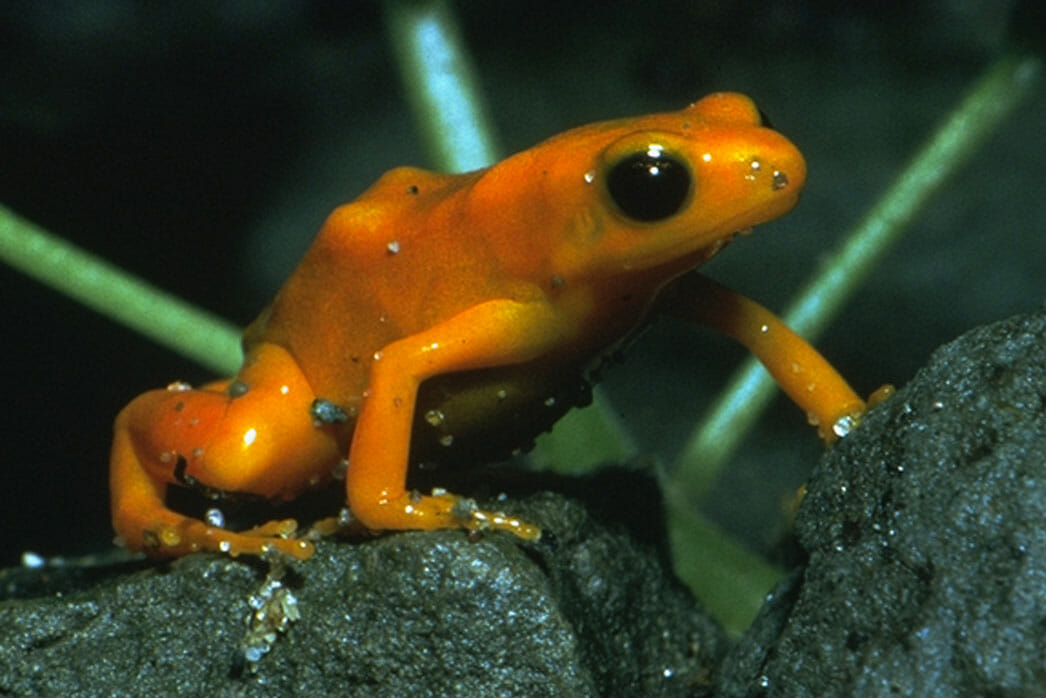Mantella frog
Mantella sp.
At the Detroit Zoo
Several species of mantella frogs can be seen at the award-winning National Amphibian Conservation Center – a leader in amphibian conservation and research – which houses a spectacular diversity of frogs, toads, salamanders, newts and caecilians. There are many species of mantella frogs at the Detroit Zoo and those currently viewable to guests include golden, Bernhard’s, arboreal, splendid, green and Betsileo mantellas.
Description
Mantella frogs are a part of a large family of frogs that vary in color from yellow to red to orange. These very small frogs have aposematic coloration, which means their bright and contrasting colors indicate toxins to potential predators. In the wild, they use the adhesive pads on their toes to stick to trees and leaves. The male frogs have a smaller body compared to the females, which have a more angular body. Like many amphibians, the mantella frogs spend almost all of their time on land.
Fun Facts
-
Mantella frogs become toxic due to the alkaloid toxins in their diets.
-
Humans have the ability to affect the toxicity of mantella frogs. This is because human activity decreases the amount of food choices mantella frogs have, meaning fewer sources of alkaloid toxins are available for consumption.
-
A group of mantella frogs is called an army.
-
While most other frog species are nocturnal, mantella frogs are diurnal, or primarily active in the day.
-
In the wild, mantella frogs can only be seen in Madagascar.






